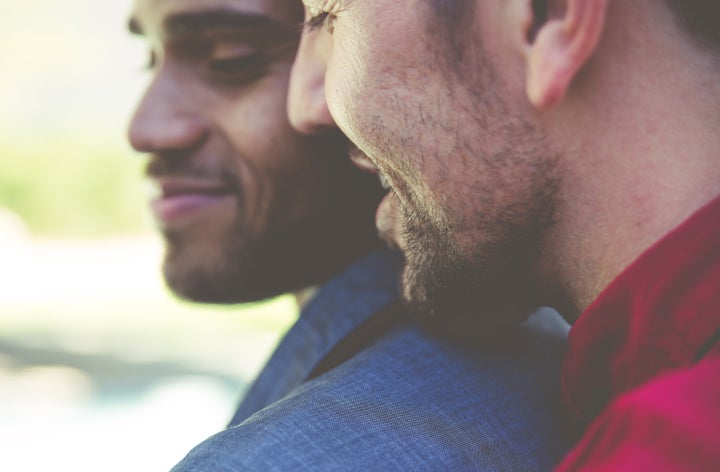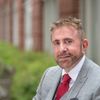
I recently have begun working on my new book, examining the experiences of coming out across time and across generations and what it means to be gay man. Building on the lived experiences of my own cohort which I explored in my last book, The AIDS Generation, my goal this time is to discover what binds all of us as gay men, regardless of age or the myriad other differences, while deliberately seeking to tell the stories of men who are not the archetypes of hegemonic masculinity and whiteness which are overly represented in our own media.
My journey to this book was inspired by personal events in my life. (The students on my research team often joke that re-search is actually me-search.) My nephew James came out to my husband Bobby and me about 3 years ago. This smart, middle class White man, the product of a Greek supportive, loving and sometimes-smothering family, by all accounts should have come out with ease. I had set the path for him some 30 years earlier and my family has been nothing but loving. But it wasn’t easy as he struggled with his emotions and what it means to be a gay man. And that’s the point; those who believe that the coming out process is a joy ride in the post-marriage-equality era do not understand what it means to be a gay man.
Coming out is a journey in one’s life from childhood forward often defined by feelings of otherness and loneliness—by trying to make sense of one’s self in a world where both subtle and not-so-subtle messages inform us that “straight is great” and that somehow we are flawed and broken. These negative experiences may be heightened for those whose lives are not shaped by the culture of a white middle class educated home. Leo, one of the men I interviewed for my book, who is and 41-years-old, HIV-positive, and identifies as Puerto Rican, Black, and Native summarized this idea perfectly when he said “There was no book on how to be gay or who your people should be or anything like that.” This truth may be particularly powerful for gay men of color, for children of immigrants, and for those from lower socio-economic backgrounds.
For over two decades, my research has focused on the health of gay men, the multitude of health disparities we experience including but not limited to HIV, and the public health of our population. Like many researchers I examined behaviors and motivations informed by well intentioned yet flawed social cognitive paradigms rooted in the actions of the moment, only to realize that it is our ongoing life experiences—our struggles with negotiating our sexual identities—that is at the root of undermining our health. Create systems, structure, polices, and laws that support our identities and our health will improve. But in the absence of those structures, we will continue to be challenged with a multitude of health issues— HIV and other STIs, substance use, and mental health burdens, and violence and other negative health sequelae in our lives.
Our identities as gay men must be front and center as we seek to improve the health of the population. Moreover lumping all of us into one bucket—the LGBTQ catchall—demonstrates the inability of our society to understand that we are not a monolith—that the issues faced by cisgender gay men differ from lesbians, and differ from those who identify as bisexual, and from those who are transgender, queer, or gender non conforming. As public health leaders we must recognize that these are distinct populations and we help inform clinicians to tailor service provision to these unique identities. It is for this very reason that I have argued for so many years that the term MSM serves no truly meaningful public health purpose whatsoever as it fails to recognize the role that identity plays in shaping our experiences, our health, and the manner in which healthcare is provided to us.
The 23 men I have interviewed for the book range from a 19-year-old Chinese/Mexican college student born outside the United States to a 78-year-old African American former substitute school teacher who grew in Baltimore in the 1950’s. All 23 stories have been moving and enlightening—stories of brave and inspiring men drawn from across three cohorts that I have to know as the Stonewall, AIDS, and Queer generations.
The original conception of the book was to explore the coming out processes of these men in different contexts and domains—work, family, school, their faith etc. Instead, like all powerful qualitative data, the stories have directed me on a different path to examine a set of interlocking themes that cut across all these lived experiences and that define our ongoing evolution of coming out and our lives― dignity, masculinity, otherness, and intersectionality, to name a few.
As we enter June, it is one theme—pride—that most comes to mind as once again listen to the stories as I prepare to write this book. I am particularity struck by the notion of what it means to be a proud and out gay men and how being out and proud helps to enhance one’s health. I asked all 23 the same initial question in our interviews: “What does it mean to you to be a gay man?”
For many of these men, being gay and expressing their identities as a gay man was associated with freedom. Nestor, age 25 who identifies as a Black Latino and first came out in the 2000’s indicated, “I guess, and now that I’m gay, I feel free, you know?” And building on this idea, Stephan, a White seropositive gay man age 48 who came out in the 1980’s described it as follows:
Uh, all things considered, it means to be free….Um –free of anything that’s in the way of that….Of my sexual identity, of my social – economic identity, of my spiritual identity, of my identity in relation to my peer group, to my colleagues, to my family. Um, yeah, it’s so – it’s such a web of, of, um, interwoven threads, really.
It was also clear that being gay was more than just about how and with whom we have sex. Too often and over the last 4 decades, our approach to the health of gay men has treated gay men as sexual vectors of disease, an approach that has particularly damaging effects in an era of HIV as chronic disease. This idea was expressed by Darius, a 31 year-old Iranian man who said:
You can just talk about you’re a man who likes to have sex with other men, um, or you know, it could be so much more than that in – in terms of culture and, you know, what, um, gay culture is like. I think for me, um, I don’t know. It’s – It’s just – I mean it just is like it is who I am and I identify as gay and I’ll – basically any sort of opportunity that I’m given, um. So it’s – it’s just like I don’t know everything.
And this identity as a gay man is part of the many intersectional identities so many cisgender gay men hold as noted by Johnny, age 42, who came out in the 1990’s:
I think it’s just, like another part of who I am as a person. It’s like a self-identifier so to speak. I’m not just only gay, I have other labels. I’m Asian-American, I’m Hispanic as well. I’m male. I’m an uncle. I’m a step-father. I, you know, there’s a lot of titles of who I am, but it’s part of who I am. So, it’s not like the only thing that I am.
But most telling is the sense of authenticity in which so many of the men with whom I spoke took pride—an authenticity that undoubtedly holds beneficial effects in all aspect of their lives especially their well being:
It means being authentic to my true self. My true self is a man who’s physically, emotionally, spiritually, attracted to men. (Emilio, Latino, 51-years-old, HIV-positive, came out in the 1980’s)
Well, for me, specifically, it’s just to finally be who I am, and be—be able to love somebody who I wanted to love, and not conform to some societal norm that exactly—like my uncle—my father’s brother—he came out in the ‘60s. (Lorenzo, Latino, 47-years-old, HIV-positive came out in the 1990’s)
For me, it means living my truth and um be able to navigate honestly in a society where heterosexism is so prominent in most cultures basically all cultures – and yeah, I guess just being able to be different and – yeah, be different and live honestly. (Yasar, Black of African decent, 23-years-old, HIV-negative, came out in the 2010’s)
Perhaps it is Ryan, a 62-years-old white man who came out in a working class neighborhood of New Jersey the 1960’s, who summarized it best and most succinctly when he described being a gay man as “ Challenging. Proud. Survivor.”
What the words of these men clearly demonstrate is that pride is a powerful multifaceted social condition for gay men—a social condition that is likely to bestow health benefits. The research is clear. Experiences of marginalization, discrimination, and victimization lead to poorer health outcome for gay men and all LGBTQ people. Hiding one’s identity leads to greater risk taking. And thus the experience of coming out, being true to one’s self, and becoming part of a larger LGBTQ family buffers against the feeling of loneness and isolation so many of us experience—psychosocial burdens that negatively impact our individual and collective based health.
What this also clearly implies is that clinical and public health professionals must attend to matters of sexual and gender identity in working with the population. The impact of our work will be most realized if we integrate clear and honest considerations of identity into the services we provide. The inclusion of sexual and gender identity into health records is a necessary, and important but insufficient step. And “culturally competent” approaches are not enough. What is needed is for healthcare providers and public health officials to celebrate along side us, and work with us form place of resilience and not deficit. Only then do we have a fighting chance of escaping the margins and enhancing our well being.
